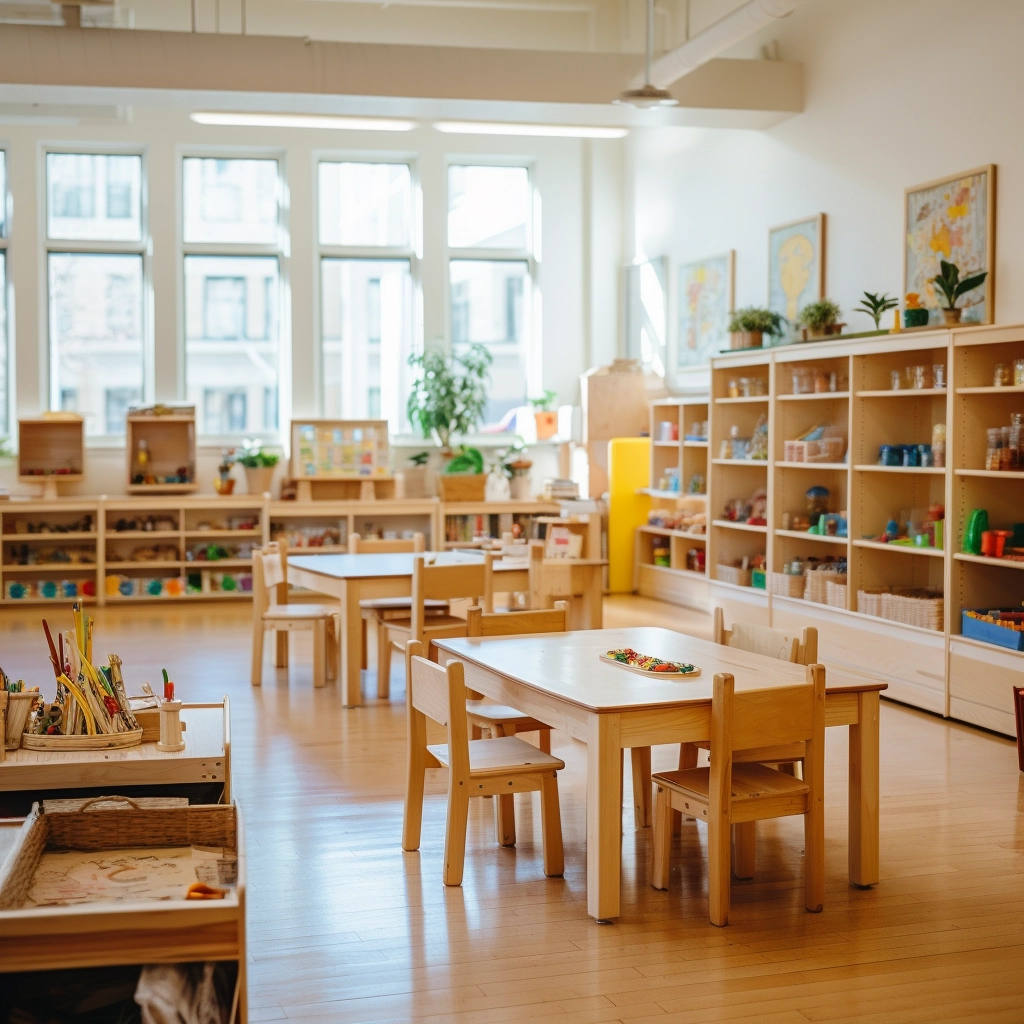Are your indoor lessons feeling repetitive? Do your preschoolers seem disengaged or restless during circle time? Are you searching for new ways to bring Montessori or Reggio-inspired learning outdoors, but worried about safety, structure, or seasonal limitations? How can we align outdoor play with educational goals while keeping things fun and manageable for teachers?
Outdoor activities for preschoolers are crucial in building motor skills, sparking creativity, supporting mental health, and making learning exciting. With the proper planning and ideas, outdoor play becomes the foundation of healthy, joyful childhood development, regardless of the season. When guided by thoughtful teaching methods like Montessori or Reggio Emilia, these activities become powerful extensions of classroom learning. They offer real-world experiences that cultivate independence, critical thinking, and a deep connection with the environment.
Ready to refresh your lesson plans with outdoor activities for preschoolers that excite both teachers and children? Let’s dive into 50 smart, safe, and enriching ideas.

Why Are Outdoor Activities Important for Preschoolers?
Outdoor activities are far more than just “recess time.” For preschool educators and school leaders, they represent a critical extension of the classroom—an environment where foundational skills are developed naturally through movement, exploration, and social interaction. Whether you follow Montessori, Reggio Emilia, or your curriculum model, integrating outdoor play into the daily rhythm strengthens the learning process in measurable and meaningful ways.
Outdoor environments engage all domains of early development—physical, cognitive, emotional, and social. They also encourage creativity, curiosity, and self-confidence in a way that structured indoor lessons sometimes struggle to achieve. Below, I’ll explain the key benefits of outdoor activities for preschoolers and why every early years program should treat them as essential, not optional.
Physical Development and Gross Motor Skills
Preschoolers are at a stage where physical movement is tied closely to brain development. Running, climbing, balancing, digging, and carrying aren’t just fun activities; they are how children build gross motor skills, spatial awareness, and body coordination. Outdoor activities provide the space and freedom for this type of movement, which is difficult to replicate indoors.
Gross motor development also lays the foundation for fine motor skills. For example, the hand strength built from climbing monkey bars contributes to better classroom pencil grip and scissor use. By offering structured yet open-ended outdoor play, teachers help children develop the physical capacity for academic tasks later.
Cognitive Development and Problem-Solving
The outdoors is a living laboratory where children naturally experiment, question, and solve problems. Whether they’re stacking stones, navigating uneven ground, or discovering what floats in a puddle, outdoor activities for preschoolers support early science, reasoning, and logical thinking—without a worksheet in sight.
These environments also promote imaginative problem-solving. A pile of sticks becomes a fort, or a collection of leaves becomes a pretend meal. This flexible thinking builds the foundation for future academic learning and creative confidence. When children are free to test ideas through open-ended play, they strengthen the skills that structured lessons aim to develop.
Social-Emotional Growth and Self-Regulation
Children often face unpredictable situations in outdoor play—sharing a toy, waiting for a turn, navigating a disagreement—which are ideal opportunities for practicing social-emotional skills like empathy, patience, and communication. Group play outside tends to be more fluid than classroom-based group work, allowing natural peer dynamics to emerge and be guided by educators.
Outdoor time is also strongly linked to emotional regulation. Studies show that children who spend time in natural environments display fewer signs of anxiety and depression.
Educational Continuity Beyond the Classroom
One of the most potent aspects of outdoor activities for preschoolers is their ability to extend and deepen classroom learning. Outdoor play connects children to real-world experiences that reinforce what they’ve learned indoors without them even realizing they’re still learning.
For example, math becomes tangible when children measure sticks, sort stones by size, or count footsteps. Language grows when they tell stories about their mud creations or describe insects they find. Outdoor spaces invite children to apply knowledge across domains in meaningful ways. This applied, sensory-rich learning strengthens memory, comprehension, and a love of discovery that carries into the classroom.
50 Fun and Safe Outdoor Activities for Preschoolers
Outdoor play offers endless opportunities for learning through movement, discovery, and sensory exploration. Here are five practical and creative outdoor activities for preschoolers that combine fun with meaningful development:
1. Leaf Sorting Safari
Preschoolers love collecting nature’s little treasures. This outdoor activity invites children to explore the playground or garden and gather leaves of different shapes, sizes, or colors.

Materials Needed:
- Small baskets or paper bags
- A tarp or mat for sorting
- Printed leaf-shaped cards (optional)
How to Play:
Take the children outside and encourage them to collect as many leaves as possible. Once back at the sorting mat, ask them to group the leaves by size, color, or shape. You can also incorporate math by counting or comparing piles.
Learning Benefits:
This fun outdoor activity for preschoolers sharpens observation skills, supports classification and early math concepts, and encourages mindful interaction with nature. It’s also a calm, grounding sensory experience.
2. Jump and Count Obstacle Course
This is one of preschoolers’ best gross motor outdoor activities, especially for energetic groups. It combines movement with simple counting or color recognition tasks.
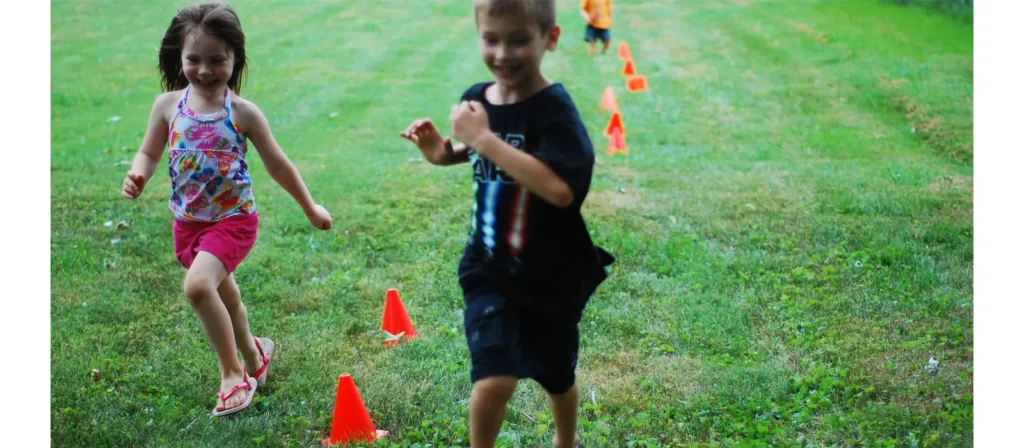
Materials Needed:
- Cones, hula hoops, or soft mats
- Number or color cards
- A safe outdoor play area
How to Play:
Set up a basic obstacle path with jumping, crawling, and balancing sections. The child must complete a mini-task at each point, like shouting the number on a flashcard before jumping. Teachers can adjust the complexity based on age.
Learning Benefits:
It encourages body coordination, number recognition, and following multi-step instructions. It is also ideal for developing self-regulation in high-energy children during outdoor play.
3. Water Painting on Pavement
Perfect for sunny days, this low-prep activity turns the ground into a giant canvas, without any mess.

Materials Needed:
- Buckets of water
- Large paintbrushes or sponges
- Sidewalk or cement space
How to Play:
Children dip their brushes in water and “paint” shapes, letters, or pictures on the ground. The sun naturally dries and ” erases” their art, encouraging them to keep creating.
Learning Benefits:
This activity promotes creativity, early writing and drawing skills, and fine motor development. It’s also a calming activity for children who need quiet outdoor play.
4. Bug Hunt Exploration
Outdoor activities for preschoolers are at their best when they awaken curiosity. A bug hunt does just that, turning the outdoors into a living science lab.
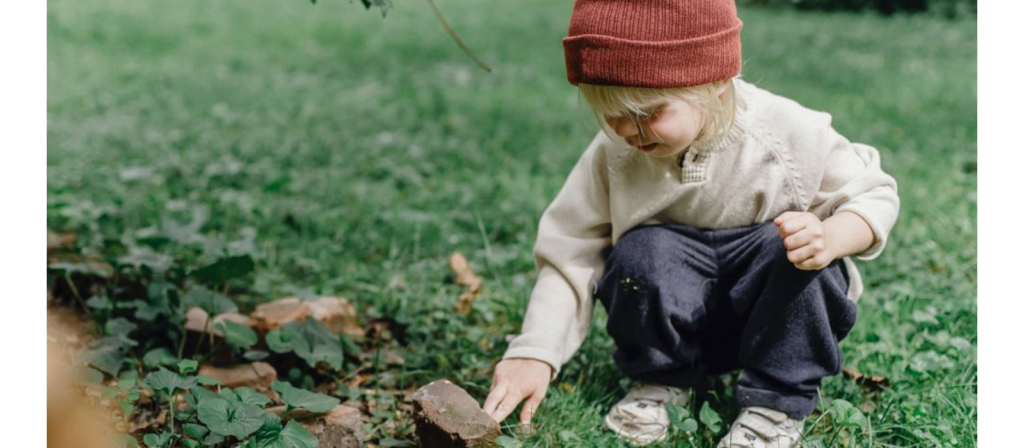
Materials Needed:
- Plastic magnifying glasses
- Clipboards and drawing paper
- Clear bug containers (optional)
How to Play:
Guide children in exploring under leaves, logs, and in grassy areas. Ask them to observe the bugs they find and draw or describe them. Older preschoolers can try counting legs or identifying colors.
Learning Benefits:
It boosts scientific thinking, observation skills, and vocabulary. It also nurtures empathy and respect for small living things, an essential emotional and ethical lesson.
5. Shadow Chase
This playful activity introduces early scientific concepts like light, shadow, and movement—perfect for sunny mornings.

Materials Needed:
- Open space with sunlight
- Chalk (optional)
How to Play:
Ask children to try stepping on each other’s shadows or chasing their own. For older kids, use chalk to trace shadows at different times of the day and compare the shapes.
Learning Benefits:
Promotes physical activity, spatial awareness, and basic science understanding. It also supports social interaction and cooperative play during outdoor time.
6. Nature Bracelet Walk
This creative walk-through-nature project adds a sensory and artistic twist to a simple outdoor stroll. Preschoolers make their own “bracelets” using natural treasures they find along the way.

Materials Needed:
- Masking tape (wrapped sticky-side-out around children’s wrists)
- Natural materials like flower petals, grass, and small leaves
How to Play:
Before the walk, help each child make a bracelet by wrapping masking tape around their wrist. As they walk, they gently press interesting natural items onto the bracelet. Do not pick live flowers or plants—collect what’s fallen naturally!
Learning Benefits:
This fun outdoor activity for preschoolers encourages mindful exploration, fine motor skills, and pattern recognition. It also nurtures an appreciation of nature’s textures and colors.
7. Color Hunt Challenge
This colorful, high-energy outdoor activity for preschoolers sharpens observation and sorting skills.

Materials Needed:
- Color swatches or laminated color cards
- Small baskets or bags
How to Play:
Give each child a color card (e.g., red, yellow, green) and ask them to search the playground or garden for natural items that match their color. After 10 minutes, regroup and discuss what they found.
Learning Benefits:
Reinforces color recognition, visual discrimination, and language development. It also helps children become more attentive to detail in their surroundings.
8. Bubble Chase Bonanza
Sometimes the best outdoor activities are the simplest. Bubble chasing is a classic that never fails to energize and delight preschoolers.

Materials Needed:
- Bubble wands or bubble machines
- Open play area
How to Play:
Blow bubbles (or turn on the machine) and let children run, pop, and laugh. Add challenge levels: “pop with your elbow,” “count how many you can pop,” or “try catching without bursting.”
Learning Benefits:
Excellent for gross motor development, hand-eye coordination, and group play. It’s a high-energy outdoor play idea that doubles as a joyful brain break.
9. Chalk Shape Maze
This activity blends creativity with movement and early geometry, using chalk and imagination to build a colorful, interactive path.

Materials Needed:
- Sidewalk chalk
- Outdoor concrete space
How to Play:
Draw large shapes (circle, square, triangle, star, etc.) randomly across the ground. Then call out challenges like “jump to a triangle” or “spin on a circle.” You can create mazes or pathways that children follow.
Learning Benefits:
Supports shape recognition, spatial thinking, and gross motor skills. It’s also a great way to review geometry terms outdoors.
10. Garden Helpers
This outdoor activity introduces preschoolers to gardening basics, encouraging responsibility and care for living things.

Materials Needed:
- Child-safe gardening tools
- Watering cans or spray bottles
- Access to soil, pots, or garden beds
How to Play:
Assign children small tasks like digging, watering, planting seeds, or pulling weeds (under supervision). Let them “own” a little plant and observe its growth over time.
Learning Benefits:
Teaches science concepts like plant life cycles, responsibility, and delayed gratification. It also nurtures emotional connection with the environment and supports sensory development.
11. Parachute Games
A bright parachute isn’t just visually exciting—it’s one of the most engaging outdoor play tools for group coordination and teamwork.
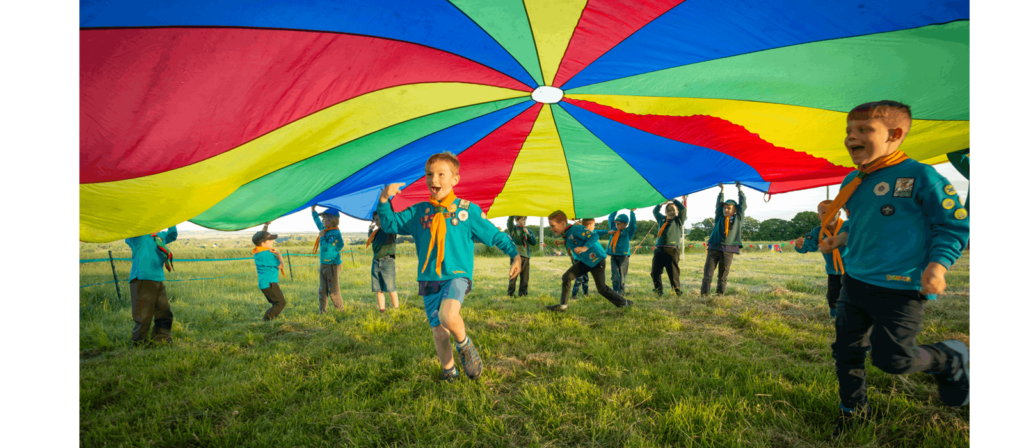
Materials Needed:
- Large play parachute (or lightweight sheet)
- Soft foam balls (optional)
How to Play:
Have children gather around the parachute and grip the edges. Play classic games like “popcorn” (toss foam balls and bounce them), “mushroom” (lift and sit under), or name-calling games. Please keep it simple and energetic.
Learning Benefits:
Encourages cooperative play, turn-taking, upper-body strength, and rhythm. This perfect gross motor outdoor activity for preschoolers works well with large groups.
12. Wind Sock Craft & Run
Preschoolers create their windsocks and run with them to observe wind patterns and movement, mixing art, science, and motion in one fun activity.

Materials Needed:
- Paper or plastic cups
- Streamers or ribbons
- String, hole punch, tape
How to Play:
Help children decorate and assemble their windsocks. Then head outside and let them run with their creations. You can discuss how wind moves or where the streamers point.
Learning Benefits:
Supports early science exploration (weather, wind), creativity, and physical movement. It’s also a beautiful way to combine fine and gross motor development.
13. Rock Balancing Challenge
This simple nature-based challenge turns rocks into tools for focus, patience, and fine motor control.

Materials Needed:
- A variety of smooth, stackable stones
- Flat surface (outdoors, preferably)
How to Play:
Invite children to collect rocks and attempt to balance them into small towers. Please encourage them to experiment with size, shape, and angles. Who can build the tallest stack?
Learning Benefits:
It develops concentration, problem-solving, and hand-eye coordination. It also supports mindfulness and perseverance, which is excellent for calming transitions between high-energy activities.
14. Animal Movement Imitation Game
Imaginative play meets physical development in this hilarious and highly active game.
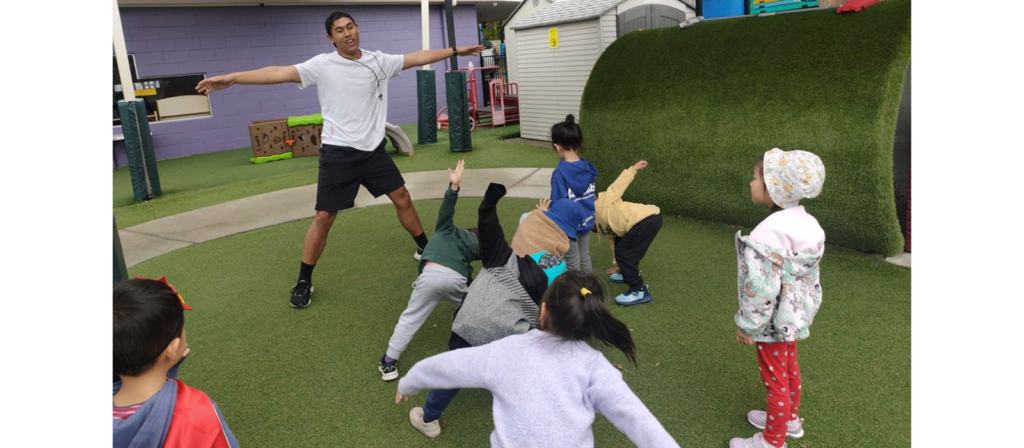
Materials Needed:
- Outdoor space
- Optional: animal picture cards
How to Play:
Call out or show an animal (e.g., frog, bird, snake, elephant), and have children move like that animal. Let them take turns choosing the next animal. Add fun twists: “move like a slow turtle,” “hop like a tired bunny.”
Learning Benefits:
Excellent for gross motor coordination, body awareness, and vocabulary development, it is one of the best outdoor activities for preschoolers to burn energy and laugh together.
15. Rainy Day Nature Soup
Yes, outdoor play can continue even in drizzly weather. This activity embraces mud, puddles, and creativity with zero prep.

Materials Needed:
- Bowls, ladles, and spoons
- Leaves, petals, grass
- Access to puddles or damp soil
How to Play:
Children collect natural materials and mix them into a big “nature soup.” Let them pour, stir, and serve. There’s no wrong way to play—just let imagination take over.
Learning Benefits:
Sensory-rich and open-ended, this activity supports pretend play, tactile exploration, and collaboration. It also helps children build resilience to different weather conditions, essential for year-round outdoor play.
16. Sensory Path Walk
Transform any outdoor walkway into a full-body sensory experience, stimulating touch, balance, and attention.

Materials Needed:
- Mats, towels, or trays
- Natural materials (grass, pebbles, bark, sand, water, fabric, foam tiles)
How to Play:
Set up a sequence of “sensory steps” for children to walk across barefoot or in socks. You can add signs like “tiptoe” or “stomp here.” Change the order weekly to keep it fresh.
Learning Benefits:
Enhances body awareness, balance, and tactile exploration. It’s an ideal outdoor activity for preschoolers with sensory processing needs, helping them regulate their responses through playful exposure.
17. Shape Hunt Adventure
Combine geometry and active play to take learning outdoors. A shape hunt reinforces classroom concepts in a real-world context.

Materials Needed:
- Printed shape cards (circle, triangle, rectangle, square)
- Clipboards or shape checklists
- Crayons or pencils
How to Play:
Give each child a card or list of shapes to find outdoors (round rocks, square windows, triangular leaves). Let them draw or mark what they see.
Learning Benefits:
Reinforces early math and visual discrimination. It also encourages movement and exploration, transforming a walk into a math-based discovery journey.
18. Bean Bag Target Toss
This simple game improves hand-eye coordination and introduces basic counting and aiming skills through playful competition.
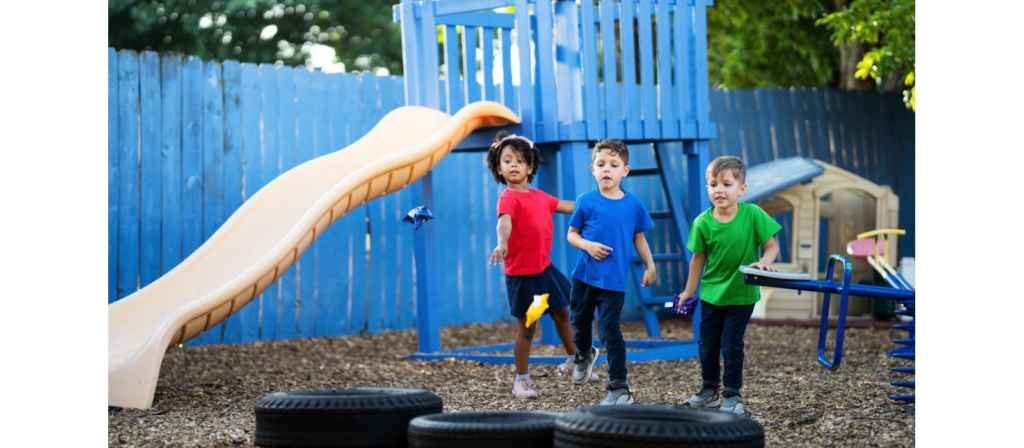
Materials Needed:
- Bean bags
- Buckets, hoops, or chalk-drawn circles
- Number labels (optional)
How to Play:
Set up targets at varying distances and assign points. Children toss bean bags into targets and count their scores. Use different rules, such as underhand only, standing on one foot, etc.
Learning Benefits:
Supports motor planning, math skills, and cooperative gameplay. One of the most adaptable and fun outdoor play activities for preschoolers.
19. Sound Detective Game
Turn your preschoolers into “sound detectives” on a mission to find and describe mysterious outdoor sounds. This focused and calm activity will bring listening skills to life.
Materials Needed:
- Detective badges or simple headbands (optional, for fun)
- Clipboards or sketchbooks
- Crayons or pencils
How to Play:
Tell children they are now detectives with special “listening ears.” Walk together quietly through the outdoor space. At each stop, ask: “What sound do you hear?” Then let them draw or describe it—chirping birds, swaying trees, crunching leaves.
Learning Benefits:
This outdoor activity improves auditory awareness, concentration, and descriptive language. It benefits children who need quiet, focused sensory experiences within outdoor play.
20. Backyard Ball Roll Ramps
Turn your outdoor space into a STEM lab by letting kids build and test their ball-rolling ramps.
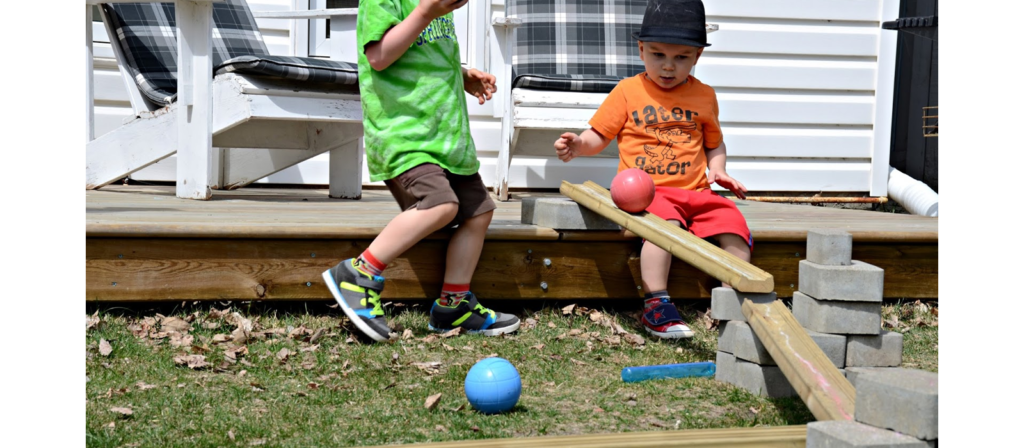
Materials Needed:
- Cardboard tubes, planks, guttering, pool noodles (cut in half)
- Small balls (ping pong, tennis, rubber)
- Blocks or bricks to create an incline
How to Play:
Invite children to create ball ramps using available materials. Let them test which ball goes farthest or fastest. Add obstacles to make it a challenge.
Learning Benefits:
This educational outdoor activity for preschoolers promotes problem-solving, cause-and-effect reasoning, and fundamental physics. It introduces core STEM concepts through hands-on experimentation.
21. Outdoor Story Circle with Props

Use natural props to bring literacy outside by turning storytime into an interactive, dramatic experience.
Materials Needed:
- A favorite preschool storybook
- Natural props (leaves, sticks, stones)
- Optional: blankets for seating
How to Play:
Read a story aloud in a circle outdoors. As the story unfolds, invite children to act out parts using natural items as stand-ins for characters or settings. For example, a stick becomes a wand, or a leaf becomes a bird.
Learning Benefits:
Enhances listening skills, imagination, and vocabulary. It is one of the most meaningful outdoor activities for preschoolers who enjoy role-play or language-based learning.
22. Stick and Stone Sculpture Garden
Encourage preschoolers to use natural materials to create their own outdoor “gallery.” This is both artistic and constructive play.

Materials Needed:
- Assorted sticks, stones, leaves, pinecones
- Flat surface or designated “garden” corner
How to Play:
Invite children to collect natural materials and assemble them into abstract sculptures, animals, or structures. Give them time to explain what they’ve built and name it. You can even take photos and give them “gallery” names.
Learning Benefits:
It supports spatial reasoning, creative expression, and fine motor control. It is great for encouraging outdoor play in quieter or more introverted preschoolers.
23. Giant Nature Tic-Tac-Toe
Using natural materials, bring a classic game to the grass, and let preschoolers take the lead in setting up and playing.

Materials Needed:
- Sticks form the grid
- Two sets of natural “markers” (e.g., pinecones vs. stones)
How to Play:
Use sticks to lay out a 3×3 grid. Divide children into teams and have them use their chosen items to play a few rounds of tic-tac-toe. Afterward, let them rebuild the grid and play again in pairs or groups.
Learning Benefits:
Promotes turn-taking, strategy development, and symbolic thinking—all key cognitive milestones in early learning.
24. Ice Excavation (Summer Science Special)
A perfect sensory-rich outdoor activity for preschoolers during summer months—ideal for cooling down while engaging their curiosity.
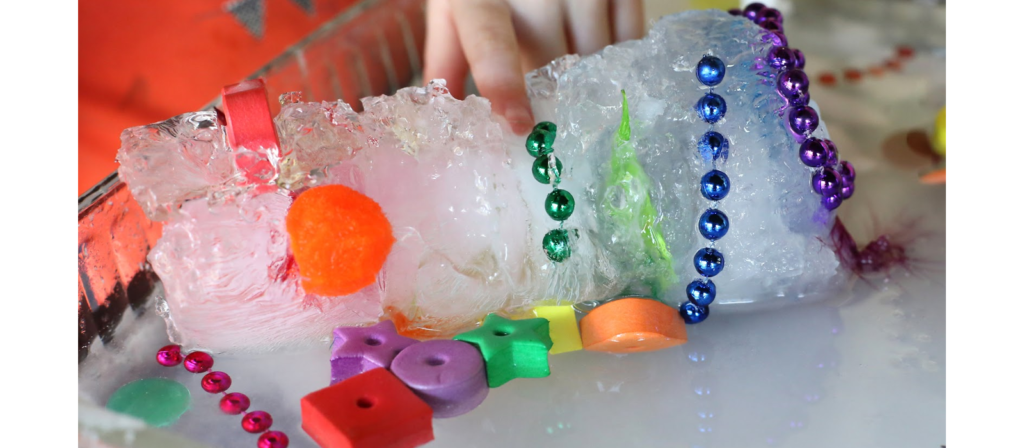
Materials Needed:
- Small toys or nature items frozen in ice blocks
- Plastic containers, salt, pipettes, or small hammers
How to Play:
Let children “excavate” hidden treasures by melting or chipping away at the ice using salt and water. You can theme bugs, dinosaurs, and letters based on your curriculum.
Learning Benefits:
Introduces basic science concepts (melting, temperature, states of matter), and supports fine motor skills and patience.
25. Team Tent-Building Challenge
This high-collaboration outdoor activity allows preschoolers to plan, build, and problem-solve together using real-world materials.

Materials Needed:
- Sheets, ropes, clothespins or clips
- Low outdoor fences, trees, or poles as anchor points
How to Play:
Challenge the children (in small groups) to build a tent or shelter using the provided materials. Let them test it—can they all fit inside? Does it block the sun?
Learning Benefits:
Develops teamwork, spatial awareness, and creative thinking. It’s also great for promoting leadership and cooperative play outdoors.
26. Rain Gauge Recorder
Transform your outdoor area into a tiny weather station! Children become “mini meteorologists” by measuring rainfall and tracking weather changes over time.

Materials Needed:
- Clear plastic container or bottle
- The ruler was taped to the side
- Weather journal or chart
How to Play:
Place your homemade rain gauge in an open outdoor area. After each rainy day, children go outside to check the level and mark the result on a chart. Extend the activity by talking about clouds, temperatures, or storm safety.
Learning Benefits:
Introduces math, measurement, and scientific observation. It’s a perfect educational outdoor activity for preschoolers, especially during wet seasons.
27. Fall Leaf Art Mandalas
Celebrate the change of seasons with a colorful art project using fallen leaves, seeds, and twigs.

Materials Needed:
- Collection baskets
- Flat ground space
- Optional: a camera to capture the final art
How to Play:
Children gather various fall materials and work individually to create mandalas or patterns. Let them experiment with symmetry, color, and design. When finished, please take a photo before the wind takes it away!
Learning Benefits:
It supports patterning, color theory, symmetry, and nature appreciation. In autumn, it also offers a calming, sensory-rich outdoor play experience.
28. Rhythm Stick Parade
This musical outdoor activity allows preschoolers to explore sound, rhythm, and movement while making joyful noise together.

Materials Needed:
- Two sticks per child (smooth branches or rhythm sticks)
- Outdoor space for marching and moving
How to Play:
Show children how to tap the sticks together in rhythm. Play call-and-response clapping games or create a simple marching “drumline.” Let each child take turns leading the beat as the group follows.
Learning Benefits:
It builds rhythm, coordination, auditory skills, and group awareness. It is a great outdoor activity for energetic preschoolers who love music and movement.
29. Spring Garden Treasure Hunt
In the spring, when everything blooms, this themed treasure hunt turns your outdoor space into a seasonal wonderland.
Materials Needed:
- Illustrated clue cards or a checklist
- Items to find: flower buds, worms, bees, mushrooms, sprouts, etc.
How to Play:
Give children a picture list of common spring discoveries and send them on a gentle nature hunt. Let them check off what they find, or take a drawing break to illustrate their favorite discovery.
Learning Benefits:
Develops visual literacy, nature vocabulary, and observation skills. This fun outdoor activity for preschoolers also strengthens seasonal awareness and curiosity.
30. Chalk Measuring Maze
Introduce early measurement and spatial reasoning skills through an interactive outdoor maze drawn on the ground.

Materials Needed:
- Sidewalk chalk
- Tape measure or string
How to Play:
Draw a series of “paths” of different lengths, widths, or shapes. Ask children to guess which is longer or shorter, then measure it with a string or a ruler. You can even challenge them to “only walk the 3-meter path!”
Learning Benefits:
Teaches basic math concepts like length, estimation, and comparison through active outdoor play. It also supports directional language (left, right, longer, shorter).
31. Feelings Garden
This thoughtful outdoor activity encourages preschoolers to connect with their emotions using colors, nature, and movement.

Materials Needed:
- Colored scarves, paper flowers, or stones
- Emotion cards (happy, sad, angry, calm, excited)
How to Play:
Set up color-coded areas in the garden or playground—each one represents a feeling. Begin by showing an emotion card and asking children to stand in the spot that matches their feelings. Let them talk about their choice or role-play that emotion through movement.
Learning Benefits:
It supports emotional awareness, self-expression, and vocabulary development. This gentle outdoor activity gives preschoolers space to explore feelings safely.
32. Friendship Walk Challenge
Build social-emotional skills by turning a simple walk into a cooperative experience.
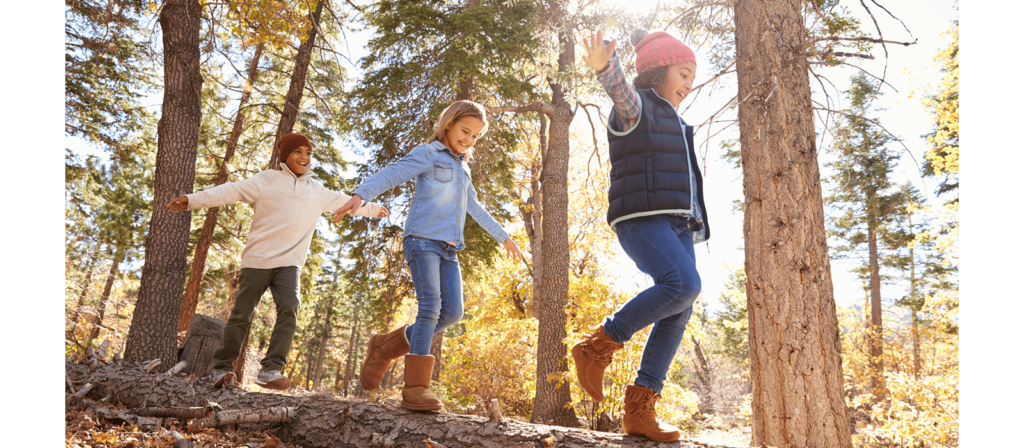
Materials Needed:
- Yarn, ribbon, or a short rope
- List of mini tasks to do in pairs
How to Play:
Pair children together and loosely tie their wrists (or let them hold a short rope). Give them tasks to complete as a team while walking—“Find something round,” “Walk to the tree without letting go,” “Take turns leading.”
Learning Benefits:
Encourages teamwork, patience, and communication—especially helpful for developing early friendship and negotiation skills during outdoor play.
33. Sand and Water Play Adventure
This classic preschool outdoor activity combines the joy of digging, pouring, and building. Children explore textures, experiment with wet and dry sand, and collaborate in imaginative play.
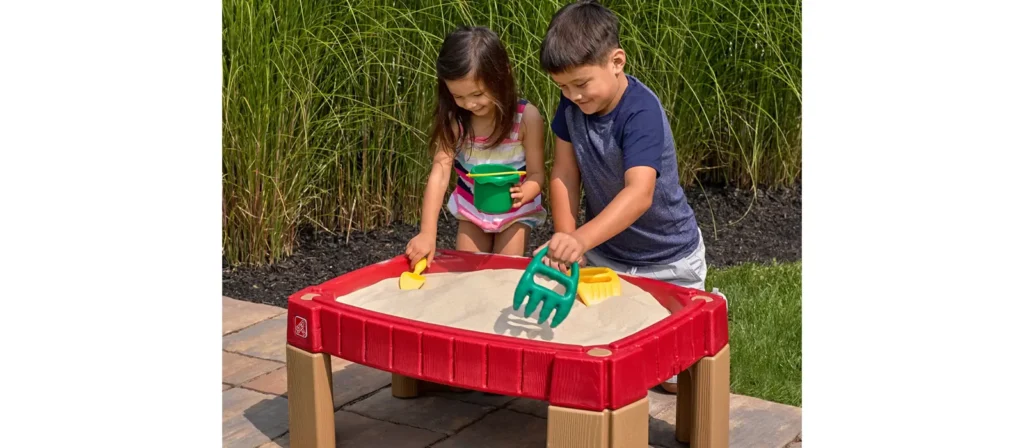
Materials Needed:
- Large sand and water table or sandbox
- Buckets, molds, and scoops
- Cups, funnels, or plastic tubes
How to Play:
Set up a sand and water area outdoors. Invite children to fill buckets, make sand castles, or explore pouring water through funnels. Encourage them to experiment by mixing sand and water, noticing how textures and shapes change. Teachers can guide group challenges, like building the tallest sand tower or creating “sand soup.”
Learning Benefits:
Sand and water play builds fine motor strength, sensory exploration, and problem-solving skills. It fosters creativity, introduces basic science concepts like cause and effect, and supports cooperative play as children share tools and ideas.
34. Story Stone Path
Blend literacy and imagination in this hands-on outdoor storytelling game.
Materials Needed:
- Smooth stones
- Acrylic paint or markers
- Clear coat (optional, to weatherproof)
How to Play:
Paint symbols or pictures on each stone (sun, tree, dragon, house, etc.) and place them on a path outdoors. As children walk the path, they pause at each stone and add a sentence to a group story.
Learning Benefits:
Enhances sequencing, narrative skills, and creative thinking. It is a powerful bridge between outdoor activities and language development for preschoolers.
35. Nature Instruments Jam Session
Let preschoolers explore sound and rhythm using materials they find themselves.

Materials Needed:
- Sticks, rocks, seed pods, bark, logs
- Containers or boxes for drums
How to Play:
Encourage children to build their own “instruments” with what they find. Tap, shake, rub, and rattle. Then gather them for a group jam session. You can even do call-and-response rhythms or copycat beats.
Learning Benefits:
Develops auditory discrimination, rhythm, and collaborative creativity. A fantastic outdoor play activity that introduces the basics of music and movement.
36. Outdoor Shape Builders
Bring geometry outdoors by having children construct large shapes using natural objects.

Materials Needed:
- Sticks, leaves, stones, flowers
- Optional: shape cards for reference
How to Play:
Challenge children to make large-scale shapes (square, triangle, circle, etc.) on the ground using only what they find outdoors. You can build them solo or as a team and discuss several sides, angles, and symmetry.
Learning Benefits:
Strengthens shape recognition, spatial reasoning, and group planning. It’s a great math-integrated outdoor activity for preschoolers with a tactile, hands-on twist.
37. Sun Catcher Craft Station
Let children create sun catchers using transparent materials and natural elements—perfect for a sunny morning craft outdoors.
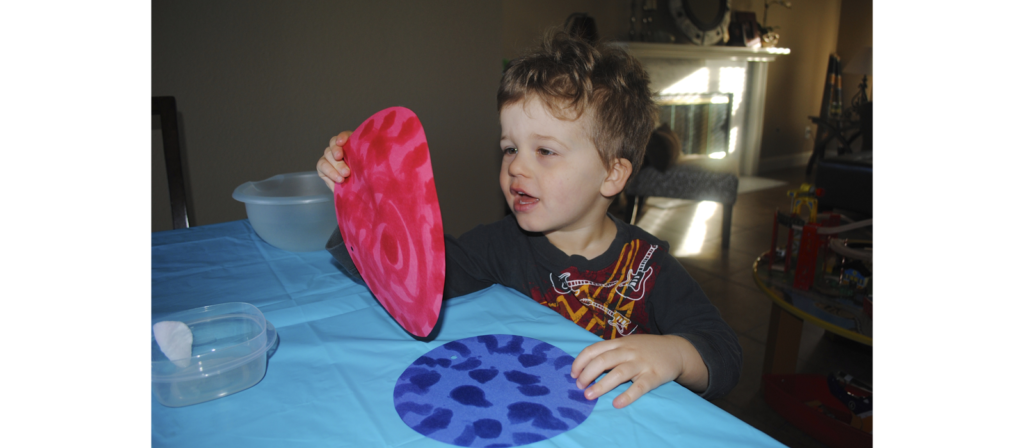
Materials Needed:
- Clear contact paper
- Paper frames (pre-cut)
- Leaves, petals, grass, seeds
How to Play:
Children stick their chosen items onto contact paper and sandwich them between two paper frames. They then hang the frames on a fence or window and watch the sunlight filter through.
Learning Benefits:
Boosts fine motor coordination, pattern-making, and appreciation for color and texture. A calm outdoor activity ideal for art-inclined preschoolers.
38. Bug Hotel Construction
Teach children about insects and habitats by helping them build a simple “hotel” for bugs in your outdoor space.

Materials Needed:
- Recycled containers (cans, wooden boxes, bottles)
- Pinecones, bark, straw, cardboard tubes
How to Play:
Show children how to pack natural materials tightly into the containers and place them in shaded garden corners. Over time, observe if any bugs move in!
Learning Benefits:
Introduces concepts of biodiversity, environmental care, and observation. It is a fantastic science-focused outdoor activity for preschoolers that evolves.
39. Balloon Paddle Game
Add energy to your outdoor play sessions with this safe and silly version of tennis, which is excellent for open spaces and motor coordination.

Materials Needed:
- Paper plates
- Craft sticks
- Balloons
How to Play:
Tape craft sticks to the plates to make “paddles.” Blow up balloons and have children try to keep them in the air using their paddle—individually, in pairs, or a group circle.
Learning Benefits:
It promotes hand-eye coordination, cooperative play, and significant muscle control. It’s one of preschoolers’ most fun outdoor activities, especially on windy days when balloons bounce unpredictably.
40. Pumpkin Rolling Races (Fall Special)
This seasonal game brings fall vibes and friendly competition to the playground.

Materials Needed:
- Small pumpkins (or gourds)
- Starting line markers
- Cones or chalk to make a race course
How to Play:
Line children up at the start and have them roll pumpkins along the course—no hands allowed! You can do relays, time trials, or obstacle challenges with small groups.
Learning Benefits:
It builds gross motor skills, balance, and directional awareness. It also strengthens the concept of taking turns and team spirit during outdoor play.
41. Outdoor Puppet Theater
Bring dramatic play into the open air with a nature-inspired puppet show, encouraging storytelling, cooperation, and creativity.
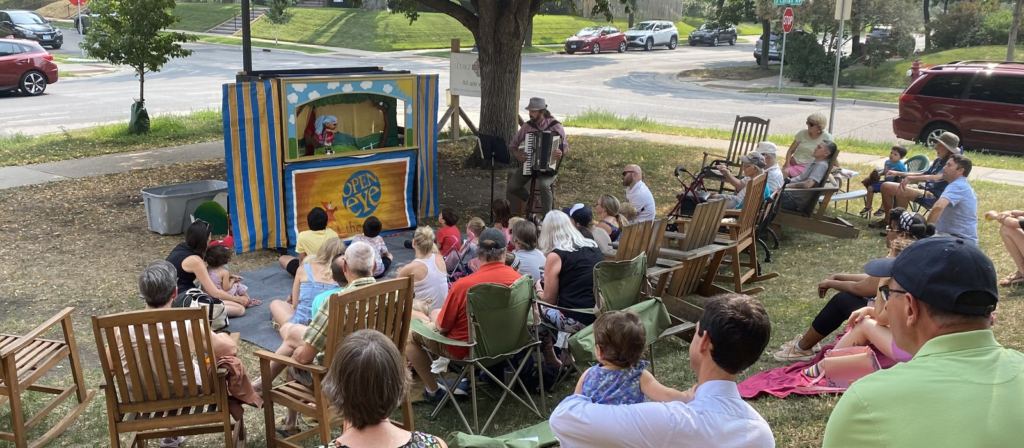
Materials Needed:
- Simple hand puppets or sock puppets
- A large cardboard box or blanket for the stage
- Optional: outdoor seating area
How to Play:
Children work in small groups to rehearse and perform a short puppet show. Please encourage them to gather natural materials to use as props or scenery. Adults can assist in narration if needed.
Learning Benefits:
It supports expressive language, cooperation, and sequencing. It is one of the most imaginative and confidence-building outdoor activities for preschoolers.
42. Team Rope Maze
A classic teamwork challenge adapted for preschoolers to promote communication and problem-solving.

Materials Needed:
- Rope or string
- Trees, cones, or poles to form a simple maze
- Blindfolds (optional for older children)
How to Play:
String a low rope maze around trees or cones. Children must guide a partner through the course by giving verbal directions or holding hands. Emphasize slow, thoughtful movements and working as a pair.
Learning Benefits:
Encourages teamwork, listening skills, and spatial navigation. Ideal for building trust and cooperation during outdoor play.
43. Drumming Circle with Buckets
Turn your outdoor space into a musical stage with this energizing rhythm activity—perfect for building group coordination.

Materials Needed:
- Plastic buckets or large containers
- Wooden spoons, sticks, or rhythm mallets
How to Play:
Arrange the buckets in a circle and let each child find their rhythm. Try call-and-response patterns, group tempos, or allow them to express different emotions through beats.
Learning Benefits:
Enhances rhythm, coordination, self-regulation, and group awareness. One of the most engaging outdoor play activities for preschoolers who thrive on movement and music.
44. Water Wall Construction
A fun and splashy STEM activity where preschoolers build their water run system.

Materials Needed:
- Recyclables: bottles, tubes, funnels, gutters
- Zip ties or tape
- Fence or standing frame
- Buckets of water
How to Play:
Help children vertically attach materials to a fence or pallet, allowing water to travel through. Pour water from the top to experiment with flow, direction, and speed.
Learning Benefits:
Introduces gravity, water flow, engineering, and trial-and-error thinking. It’s a perfect outdoor activity for preschoolers in warmer months that combines science with sensory play.
45. Rainbow Run Drawing Game
This creative and movement-based game combines color recognition and motor skills in one joyful experience.
Materials Needed:
- Sidewalk chalk in rainbow colors
- Outdoor space for movement
How to Play:
Draw several colored circles or paths across the pavement. Call out a color and action: “Jump to red!” or “Tiptoe to blue!” You can also let children invent new combinations.
Learning Benefits:
Promotes color identification, gross motor movement, and following directions. A great outdoor game for large groups with a creative twist.
46. Nature Yoga Time
Outdoor yoga offers preschoolers a calm, focused break filled with gentle movement, stretching, and breathing in fresh air.

Materials Needed:
- Yoga mats or picnic blankets
- Picture cards of animal poses (e.g., “tree,” “cat,” “cobra”)
- Calming nature music (optional)
How to Play:
Guide the children through a short sequence of poses. Use nature-themed storytelling: “Grow like a tree,” “Stretch like a cat,” “Breathe like the wind.” Encourage stillness and deep breathing between each pose.
Learning Benefits:
Improves flexibility, self-regulation, and attention span. This peaceful outdoor activity is perfect after high-energy play or during transitions.
47. Nature-Inspired Letter Writing
This quiet outdoor writing task introduces early literacy through environmental inspiration.

Materials Needed:
- Clipboards, paper, crayons or pencils
- Natural items (leaves, twigs, seeds, petals)
- Optional: alphabet reference cards
How to Play:
Ask children to create a “letter” to nature, a tree, or an animal. Younger children can draw pictures and dictate their messages to teachers. You can display the letters outdoors on a string line.
Learning Benefits:
It supports expressive language, symbolic thinking, and fine motor development. It is one of the most meaningful educational outdoor activities for preschoolers with writing readiness goals.
48. Holiday Nature Parade
This activity is perfect for holidays like Earth Day, the Spring Festival, or local cultural celebrations. It lets kids create, move, and celebrate together.

Materials Needed:
- Homemade costumes or masks (made from nature or recyclables)
- Rhythm instruments (drums, shakers)
- Outdoor path for parading
How to Play:
Children dress up and march outdoors with instruments. You can assign themes (e.g., “Spring Birds,” “Leaf People,” “Bug Parade”) and invite families to watch or join.
Learning Benefits:
Builds confidence, rhythm, cultural awareness, and self-expression. A high-spirited outdoor activity that brings the school community together.
49. Ladder Toss (Preschool Version)
A modified version of the classic ladder toss game, adapted for younger learners using safe, soft materials.
Materials Needed:
- Foam balls or bean bags
- “Ladders” made from crates or cardboard boxes stacked at different heights
- Number labels (optional)
How to Play:
Children toss objects, aiming at different height levels. You can assign points or challenges, such as “try with your eyes closed” or “throw with the opposite hand.”
Learning Benefits:
Reinforces hand-eye coordination, aiming, and number association. Great for outdoor play sessions where individual or pair challenges are needed.
50. Nature Obstacle Adventure Finale
A large-scale, all-in-one obstacle course using everything you’ve done so far—perfect as a grand seasonal wrap-up or celebration day.

Materials Needed:
- Cones, logs, ropes, buckets, chalk, natural materials
- Markers to indicate stations and path flow
How to Play:
Design a multi-station obstacle course combining jumping, crawling, tossing, balancing, collecting, and storytelling. Let children move through the course in small groups. At the end, award ribbons or high-fives!
Learning Benefits:
A full-body outdoor activity for preschoolers that celebrates strength, perseverance, and all they’ve learned through the season’s outdoor experiences.
How to Incorporate Outdoor Activities for Preschoolers
Outdoor activities for preschoolers are most effective when thoughtfully integrated into daily teaching, not treated as a reward or just free time. The goal is to make outdoor moments a natural extension of the learning process, where children can explore, move, and interact in ways that support their development.
Instead of isolating outdoor play from academic objectives, educators can use these moments to reinforce core skills like counting, storytelling, problem-solving, or observing nature. Below are practical strategies to make outdoor learning a consistent and meaningful part of your preschool program.
Connect Outdoor Play to Learning Objectives
Every moment outdoors is a chance to meet curriculum goals hands-on. Take the lesson outside if you’re working on numbers, letters, or shapes. Children can count flower petals, sort leaves by size or color, or form letters in the dirt using twigs. These outdoor activities for preschoolers help bridge the gap between abstract classroom concepts and real-world understanding, especially for active learners.
Integrate Outdoor Time into Your Daily Routine
Instead of viewing outdoor time as “extra,” schedule it into daily routines. Morning welcome, group circle, snack time, and storytelling can all happen outdoors. This helps children transition smoothly between indoor and outdoor learning while providing consistent access to fresh air and natural stimulation.
Use Open-Ended Materials and Natural Loose Parts
You don’t need expensive children’s outdoor play equipment. Items like rocks, leaves, sand, sticks, and water are powerful tools for exploration and creativity. These materials promote problem-solving and imaginative thinking, helping children engage in sensory and tactile learning. Rotating a small collection of loose parts can keep interest high without overwhelming the space.
Design Outdoor Learning “Stations”
Create simple stations outdoors that mirror indoor activity areas: a reading blanket under a tree, a mud kitchen for pretend play, or a math zone with counting stones. Label each space and change activities weekly or seasonally. These stations provide structure without limiting creativity and help children make connections between indoor and outdoor learning.
Let Children Take the Lead
Some of the most effective outdoor activities for preschoolers come not from a lesson plan, but from spontaneous moments of curiosity. A child chasing a butterfly or splashing in a puddle tells you what they’re ready to learn. Ask open-ended questions, scaffold their discoveries, and build your next lesson around what captured their attention. Outdoor play supports inquiry, independence, and observation—all core skills in early learning.
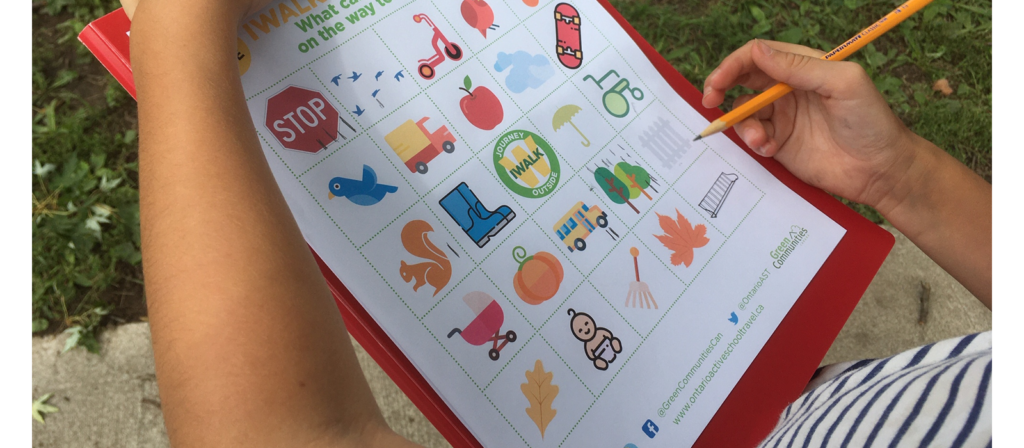
Engaging Ideas for Preschool Outdoor Activities
Outdoor activities for preschoolers aren’t just about “getting the wiggles out”—they’re a crucial part of a well-rounded early childhood program. The best outdoor play combines physical movement, open-ended creativity, collaboration, and learning through doing. When we design engaging outdoor activities, we offer children more than fun—we give them hands-on experiences that shape how they think, feel, and connect with the world.
Over the years, working with kindergartens across North America, Europe, and Australia, I’ve seen one clear trend: outdoor activities that are open-ended and multi-sensory consistently lead to deeper learning and more joyful classrooms. Whether a stick becomes a magic wand or puddles become a science lab, outdoor play fuels children’s natural curiosity in ways the classroom sometimes can’t.
So, what exactly makes an outdoor activity engaging for preschoolers? Educators should remember key principles and examples when planning activities that resonate with young children.
Prioritize Open-Ended Play
Engaging outdoor play gives children the freedom to explore without fixed outcomes. Rather than telling children what to build or how to play, offer them materials and space to make their own decisions. Loose parts—like sticks, fabric, stones, ropes, and buckets—are incredibly effective. For example:
- Instead of giving children a pre-assembled toy, give them tubes, buckets, and balls to design their ball run or water wall.
- Rather than organizing a fixed art activity, let them collect leaves, petals, and bark to create their nature mandalas or sun catchers.
When children control how they use materials, they stay focused longer, solve problems more independently, and create work that reflects their thinking.
Incorporate Movement and Challenge
Preschoolers thrive on movement. Their brains and bodies develop best when challenged physically. Activities like climbing, balancing, jumping, crawling, and running should be included in outdoor play sessions daily. And these movements don’t have to come from expensive equipment. You can:
- Use tree stumps, planks, and tires to build your obstacle courses.
- Play gross motor games like animal relays, parachute bounce, or hopscotch with a learning twist.
- To make movement more imaginative, add thematic challenges like “move like the wind” or “pretend you’re crossing a river.”
Gross motor outdoor activities help preschoolers build coordination, core strength, and confidence and are often the most joyful parts of their day.
Add Storytelling and Imagination
Children love to pretend, and the outdoors is the perfect backdrop for dramatic play. A tree becomes a dragon’s cave, or a pile of leaves becomes a witch’s potion. This imaginative angle can make even the simplest outdoor activity more engaging. You can support this by:
- Setting up outdoor puppet shows with sock puppets and nature props.
- Creating a “story stone path” where each stone has a picture, and children take turns adding to a group story as they walk.
- Using costumes, nature masks, or small-world setups like a fairy garden or dinosaur dig zone.
These activities build narrative thinking, vocabulary, and creative expression—all through joyful play.
Let Nature Be the Curriculum
Sometimes the most engaging ideas aren’t “activities” but simply noticing and responding to what’s happening outside. Watch the clouds, listen for birds, dig in the soil, or follow ants along a log. Give children fundamental tools—magnifying glasses, buckets, notebooks—and trust them to explore.
You can set up simple nature-based provocations like:
- “What do you think lives under this log?”
- “Why are the leaves changing color?”
- “Can you build something that floats in the water tray?”
These spark open-ended inquiry and connect to real-world scientific thinking. Outdoor learning doesn’t need to be planned down to the minute—it thrives when you leave space for curiosity to lead.
Involve Children in the Setup
One of the best ways to ensure an activity is engaging? Let the children help design it. Ask them:
- “What should we do with these sticks?”
- “How could we make a bug house?”
- “What would you build if we gave you this rope?”
By inviting choice and participation, children feel empowered. They become co-creators of their environment, not passive recipients. This builds ownership, responsibility, and deeper engagement with their surroundings.
In short, the most engaging outdoor activities for preschoolers are not overly structured, don’t require perfect weather, and don’t rely on expensive equipment. They are born from flexibility, child-led ideas, natural materials, and a little creativity from you, the educator.
Outdoor play is not a luxury—it’s a necessity. It becomes the most impactful, memorable part of a child’s early learning journey when done right.

What Safety Precautions Should You Take When Planning Outdoor Activities for Preschoolers?
While outdoor activities for preschoolers are filled with joy, creativity, and learning, safety must always come first. As a supplier to hundreds of kindergartens across North America, Europe, and Australia, I’ve seen firsthand how even the most thoughtfully designed play spaces can become problematic if safety planning is overlooked.
Preschoolers are naturally curious, and that’s beautiful, but it also means they’re prone to missteps, tumbles, and unexpected experiments. Our role as educators and administrators is to design engaging and safe environments, with proactive systems to minimize risk and maximize confidence for children and their parents.
Here’s how we do it.

Perform Regular Safety Inspections
Before any outdoor session begins, check the play area thoroughly:
- Are there broken branches, loose gravel, or hidden holes in the ground?
- Is all children’s outdoor play equipment properly secured and stable?
- Are there sharp edges, rust, or loose screws on structures like slides or climbing frames?
We recommend doing a quick visual scan every morning, and a more thorough inspection weekly, especially if your setting is open to public access after hours.
If you’re using mobile materials (like crates, wood planks, tires, etc.), ensure they’re free from mold, splinters, or trapped water. Your goal isn’t to eliminate all risk—some risk is necessary for development—but to eliminate hazards.
Use Age-Appropriate Equipment and Activities
Not all outdoor play activities for preschoolers are appropriate for all ages. Choose materials and tasks that align with the children’s developmental stage:
Here’s a simple guideline:
- Climbing equipment should be no higher than a child’s shoulder height
- Ropes and tires must be anchored or supervised to prevent rolling or tangling
- Tools (like shovels, hammers, or buckets) should be lightweight, rounded, and manageable
Activities should match your children’s motor skills and judgment levels. For example, an ice excavation activity (Activity #24) using salt and pipettes is safe for 5-year-olds but unsuitable for 3-year-olds without close supervision.
Maintain Clear Sight Lines and Active Supervision
A lack of visual oversight is one of the most common causes of outdoor accidents. Ensure your space allows staff to see all children at all times—no hidden corners, tall shrubs, or large equipment blocking the view.
Assign specific supervision zones to teachers or assistants. For example:
- One adult at the sandbox zone
- One adult is near the climbing area
- One adult is monitoring the gate or entry point
Talk with the children as they play. Ask questions. Narrate their discoveries. This helps prevent accidents and builds trust. Active supervision is the first and best line of defense during outdoor activities for preschoolers.
Prepare for Weather Changes
Weather can change quickly, and young children are susceptible to temperature, wind, and sunlight. Always have a weather response plan, especially for outdoor activities in summer or winter.
Here are some best practices:
- In hot weather: provide shaded areas, water breaks every 15–20 minutes, and avoid metal equipment that heats up.
- In cold or wet weather: make sure children are dressed in waterproof layers, gloves, and hats. Adjust activities for safer traction on wet surfaces.
- Always check the UV index, wind speed, and air quality before going out.
Outdoor activities for preschoolers in winter or summer need to balance exposure and safety—you don’t need to cancel play, but you do need to adapt.
Teach and Practice Safety Rules with Children
Children thrive when they know what’s expected of them. Make safety part of your daily routine—not just something you discuss during emergencies.
For example:
- Before every outdoor session, review 2–3 rules in a playful way:
“What do we do before climbing?”
“Where do we throw the ball?”
“Why do we walk with a stick, not run?” - Use visual cues like color-coded cones, signs, or footprint paths to guide behavior.
- Let children practice safety roles (line leader, lookout, gentle reminder) to build ownership and understanding.
Children don’t learn safety through warnings alone—they learn through repetition, modeling, and feeling trusted.
By building these safety measures into your daily outdoor routines, you create an environment where children can take healthy risks, explore freely, and develop confidence, without putting their well-being at unnecessary risk.
Safe doesn’t mean boring. When done right, a secure outdoor space becomes a rich, reliable learning environment that supports freedom and responsibility—one of the most powerful lessons we can give our preschoolers.

Conclusion
Outdoor activities for preschoolers are more than just physical release—they are vital to children’s growth, learning, and connecting. From cognitive development to social-emotional skills, the outdoor environment offers a dynamic extension of the classroom that supports real, lasting learning.
Educators create spaces where safe exploration can thrive, rain or shine. This requires thoughtful planning, consistent routines, and environments built for movement, creativity, and discovery. Well-designed furniture and play structures contribute directly to that mission, helping children feel secure and confident outdoors.
Many preschools choose partners who understand early childhood needs and outdoor functionality. Providers like West Shore Furniture offer durable, child-sized outdoor solutions that align with preschool play rhythms, whether for building, climbing, resting, or gathering. With the right tools, outdoor learning becomes not just a possibility but a priority.





